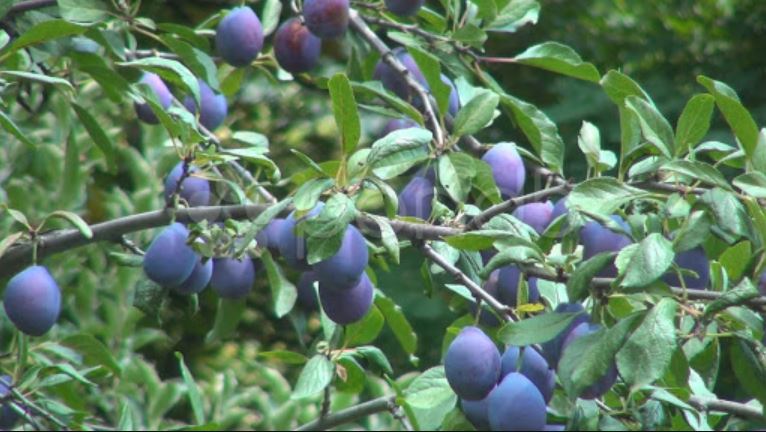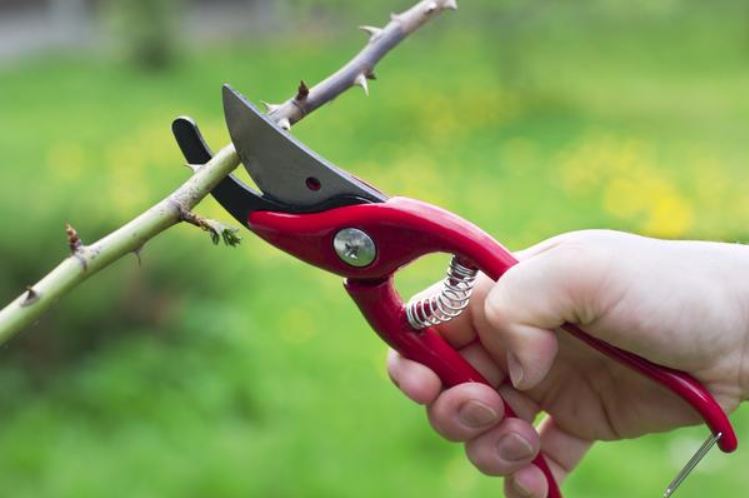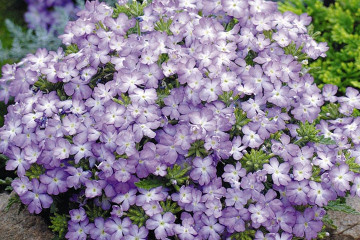Plum planting, proper care and cultivation
Content:
Any gardener can grow plums, but not everyone is able to get a good harvest. The fact is that garden plum is a thermophilic crop that must be properly planted and grown. Therefore, it is necessary to understand in advance the peculiarities of growing plum trees in the garden.
In which season is it better to plant
Many are interested in when to plant a plum. Planting can be carried out both in the spring and autumn seasons. In the spring, planting work is carried out in the second half of March, so that the tree has time to take root before the beginning of summer. Plum trees planted in the ground before summer are stronger. They rarely get sick and grow quickly.
Many gardeners choose to plant in the fall due to the lack of drought and heat. Cloudy weather, high rainfall and low temperatures allow the tree to quickly take root in a new place. Plants should be planted in late September or early October, before the frost begins.
Site selection
Before planting a plum, you need to choose a suitable site for it. The place for further landing must meet the following requirements:
- Good sunlight. Lack of light can negatively affect the cultivation of plums and therefore should not be planted in shaded areas.
- Lack of wind. The seat must be reliably protected from strong wind gusts.
- Fertile soil. To get a good plum harvest at home, you need to grow trees in fertile soil with low acidity.
- Lots of free space. The root system of the plum grows rapidly. Therefore, it should be planted in places where there are no trees, bushes and other plants at a distance of at least three meters.
Sapling selection
Plum yield directly depends on the selected variety. It is selected taking into account the area in which the tree will be grown. For example, frost-resistant varieties are suitable for the Urals and Siberia. For the Central strip, the Leningrad region and the Moscow region - any kind of plums.
When choosing a tree for planting, you must carefully examine it. For further planting, you cannot use seedlings with such features as:
- broken shoots;
- yellow spots on the trunk;
- poorly developed root;
- defects on the trunk;
- vaccination site completely covered with a crust;
- decay marks on the trunk.
Seedling preparation
Before planting a plum, you need to read the instructions for preparing seedlings. The procedure is as follows:
- Root pruning. The roots must be rinsed with warm water, after which the ends are trimmed.
- Cutting off the ground part. When digging a seedling out of the ground, the root system is often injured. This leads to an imbalance between the ground part and the roots.That is why it is necessary to cut the branches of the tree. They are shortened by a third.
- Soaking roots. To grow a healthy tree, you need to soak the roots in water before planting. This procedure improves the survival rate of the seedling after planting.
Soil preparation
Many novice gardeners are interested in what kind of soil the plum likes. Plum trees grow best in loose and fertile soil, so before planting, you need to prepare the soil. This should be done in the fall, before the start of frost.
First, the soil is dug up. Then a feeding mixture made from superphosphate, potassium salt and compost is added. If necessary, you can lime the area to reduce the acidity of the soil.
Agrotechnological recommendations
There are several agrotechnical recommendations that will help you figure out how to plant a plum correctly.
Growing from a bone
A step-by-step guide to planting plum pits is as follows:
- Filling the pot. First you need to fill the container with soil mixture. It is prepared from river sand and sod land, which are mixed in equal proportions.
- Landing. The seeds are planted to a depth of 2-3 cm. If there are several of them, they are planted at a distance of 10 cm from each other.
- Watering. The planted plum seeds are immediately watered.
The first shoots will appear within 3-4 weeks, as the plum grows quickly enough. Containers with planted trees should be grown in the light at a temperature of at least 10 degrees Celsius. The plant is watered every 3-4 days.
Planting plums in a hole
Before taking care of the plum in the country, it must be planted in open ground. Planting instructions:
- Pit preparation. It must be dug out at a distance of at least a meter from other trees and shrubs. Its depth and width should not exceed 70-75 cm. A drainage layer of gravel and crushed bricks is made at the bottom. Then everything is covered with soil mixed with organic and mineral fertilizers.
- Landing. In the process of planting, the seedling is carefully placed in the planting pit and sprinkled with soil. Then the soil is watered and tamped.
- Garter. The planted tree must be immediately tied to a metal support. This can be an iron peg or a regular wooden plank.
Planting at elevated groundwater levels
Plums should not be planted in low-lying areas where waterlogging may begin. In such conditions, the root collar will stop growing, and the tree will gradually begin to die. For planting, you need to choose places where groundwater occurs at a depth of 3-4 m.
Possible landing errors
Despite the fact that there is nothing difficult in planting and caring for plums, some gardeners still make mistakes. Among the most common are:
- planting plums at a large slope;
- adding a large amount of dressings;
- waterlogging of the soil;
- thickened plantings.
Plum - care and cultivation
A mature plum tree must be properly cared for so that it continues to bear fruit well.
Pruning
In the first few years after transplanting into open ground, the tree begins to grow actively. Branches can develop unevenly, so you have to periodically trim the growths, as well as prune rotting branches.
The first pruning is done one year after planting. Ten skeletal branches are left on the tree. All other shoots must be completely removed. The branches left behind should be shortened by one third each year.
Fertilizer
Fertilization should be done three years after planting the tree. The first feeding is carried out in the fall, during the digging of the site. In this case, mineral dressings are added to the soil. Organic feed mixtures are not added until summer. In the second half of June and in July, use mullein infusion. Also, the tree can be fed with wood ash or dolomite flour.
During the formation of the fruit, the plum needs mineral fertilizers, and therefore it needs to be fed more often. It is necessary to add more magnesium, potassium and nitrogen fertilizers to the soil.
Mulching and watering
It is imperative to water plum trees, as without enough moisture they will not bear fruit well. It is necessary to water plums abundantly so that the soil gets wet to a depth of 35-45 cm.At least five buckets of water will have to be poured under each tree. It is not worth overmoistening the soil, as this will lead to the appearance of fungal diseases.
In the second half of summer, you need to do soil mulching. Sprinkle the soil near the trunk with hay, straw or peat. You can open the base of the tree and remove the mulch in April.
Preparing for winter
Despite the fact that the plum is a frost-resistant plant, it still needs to be prepared for winter. Before the start of winter frosts, you must do the following:
- dig up the soil and mulch with humus;
- cover the near-trunk circle with a film;
- whitewash the branches and trunk.
When fruiting begins
Many people are interested in when the plum begins to bear fruit. The first fruits begin to form on the tree only in the fourth year after planting in open ground. On some early varieties of plums, fruiting occurs 2-3 years earlier. On the later varieties, on the contrary - a few years later.
Plum is a tree that can be found in almost every garden. Before you start growing plum trees, you need to familiarize yourself with the peculiarities of planting and caring for them.






















